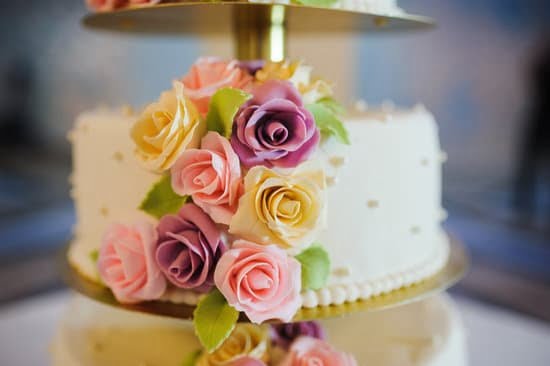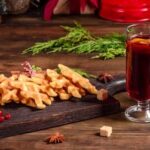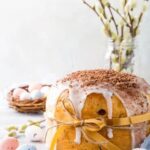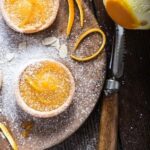Edible flower decorations have become a popular trend in the baking world, adding a touch of beauty and uniqueness to cake designs. From delicate petals to vibrant colors, these edible flowers bring an enchanting element to any dessert. In this article, we will explore the art of making edible flower decorations for cakes, providing you with the knowledge and techniques to create stunning floral arrangements that are not only visually appealing but also deliciously edible.
The concept of using edible flowers as cake decorations is nothing short of a work of art. Just like a skilled painter uses different strokes and colors to create a masterpiece, incorporating edible flowers onto cakes requires careful consideration and creativity. As more bakers and home cooks discover the wonders of edible flowers, this trend has grown exponentially, resulting in awe-inspiring creations that leave both eyes and taste buds satisfied.
When it comes to making edible flower decorations for cakes, understanding the types of flowers that are safe for consumption is essential. Not all flowers are created equal in terms of edibility, as some may be toxic or cause allergic reactions.
In the next section of this article, we will delve into the various types of edible flowers that can be used for cake decorating and provide you with a comprehensive list of popular choices along with guidance on where to source them.
So whether you’re looking to try something new in your baking endeavors or simply want to create an exquisite centerpiece for your next special occasion cake, learning how to make edible flower decorations is sure to open up a world of limitless possibilities. From selecting the right blooms and preparing them properly to exploring different decorating techniques and enhancing flavors, join us on this journey as we unlock the beauty of embracing nature’s bounty in our cake designs.
Understanding the Types of Edible Flowers for Cake Decorations
When it comes to decorating cakes with edible flowers, it’s essential to understand the different types of flowers that are safe for consumption. Not all flowers are edible, and some can be toxic if ingested. However, there is a wide range of beautiful and safe options available that can bring a touch of elegance and uniqueness to your cake designs.
Here is a detailed list of popular edible flowers used in cake decorating:
- Roses: These timeless blooms come in various colors and flavors, making them versatile for cake decorations. Their delicate petals can be used whole or separated for smaller accents.
- Lavender: Known for its calming aroma, lavender adds a subtle floral taste to cakes. Use the small purple buds sparingly as a decoration or infuse them into syrups or creams.
- Marigolds: With their vibrant colors, marigolds make stunning additions to cakes. Both the petals and leaves are edible and add a mildly tangy flavor.
- Violas: These small, dainty flowers come in an array of colors and have a mild grassy flavor. They work well as individual decorations or when used to create colorful patterns on the cake’s surface.
- Pansies: Similar to violas, pansies are larger and more showy with bold colors. They have a slightly minty, wintergreen taste that pairs well with chocolate desserts.
- Nasturtiums: These brightly colored flowers have a peppery flavor reminiscent of watercress or radishes. Use their vibrant petals to add pops of color or simply garnish your cakes with their leaves.
- Violets: Delicate and fragrant violets lend themselves beautifully as decorations for cakes due to their striking purple hue and sweet scent.
It’s important to note that not all parts of these flowers may be edible, so it’s crucial to research and only use the petals as decorations. When sourcing edible flowers, make sure they are organic and free from pesticides or other harmful chemicals.
In order to ensure you are using safe and suitable flowers for your cake decorations, there are various resources available online or in specialized baking stores that can provide detailed information on edible flowers. Additionally, consider consulting with a knowledgeable florist or horticulturist who can guide you in selecting the best flowers for your specific cake designs.
Preparing Edible Flowers for Cake Decorations
When it comes to using edible flowers as decorations for cakes, proper preparation is essential to ensure their safety and visual appeal. Before incorporating beautiful blooms into your cake designs, it is important to clean and prep them correctly. By following a few simple steps, you can enhance the flavors and aesthetics of your cakes with these edible floral additions.
Cleaning edible flowers before use is crucial to remove any dirt, insects, or pesticides that may be present. Start by gently rinsing the flowers under cool running water to remove any loose debris. Avoid soaking the flowers as this can cause them to become waterlogged and lose their shape.
Once rinsed, carefully shake off any excess water and pat the flowers dry with a paper towel or delicate cloth. It is important to handle the flowers delicately during this process to prevent damage. Keep in mind that some flowers have fragile petals or delicate stems that require extra care.
After cleaning, inspect the flowers for any discolored or damaged areas and remove them if necessary. Only use the freshest and most vibrant parts of each flower for your cake decorations.
| Process | Description |
|---|---|
| Rinsing | Gently rinse the flowers under cool running water. |
| Drying | Shake off excess water and pat the flowers dry with a paper towel. |
| Inspecting | Remove any discolored or damaged areas from each flower. |
Special considerations may be needed when preparing certain flower varieties. For example, fragile blossoms such as pansies should be stored in a moist towel or damp paper towel to prevent wilting. On the other hand, sturdier flowers like marigolds can be lightly misted with water before arranging them on the cake to add a touch of freshness.
By properly preparing edible flowers for cake decorations, you can ensure that they not only look stunning but are also safe for consumption. Taking the time to clean and inspect the blooms will showcase their natural beauty and enhance your overall cake design.
Techniques for Using Edible Flowers on Cakes
Pressing Edible Flowers
One popular technique for using edible flowers on cakes is by pressing them. Pressed flowers create a delicate and whimsical touch to cake designs, adding a natural beauty that is unmatched. To press edible flowers, you will need fresh blooms, parchment paper, and heavy books or a flower press.
Start by choosing the freshest edible flowers possible. Select flowers that have just bloomed and are in their prime. Gently remove any dirt or insects from the petals, being careful not to damage them.
Next, lay a sheet of parchment paper on a flat surface. Arrange the edible flowers on the parchment paper in your desired design. Make sure they are evenly spaced and not touching each other.
Once arranged, carefully place another sheet of parchment paper on top of the flowers. This will help protect them during the pressing process. Place heavy books or a flower press on top of the second sheet of parchment paper to apply pressure.
Leave the flowers pressed for about 7 to 10 days, or until they are completely dry and flattened. Once dried, carefully remove the pressed flowers from between the parchment papers.
Crystallizing Edible Flowers
Another technique for using edible flowers on cakes is by crystallizing them with sugar. This adds an elegant and sparkly touch to your cake decorations while also subtly enhancing the sweetness of the floral flavors.
To crystallize edible flowers, start by gently washing them under cold water to remove any dirt or insects. Pat dry with a clean towel or paper towel.
Using a small clean brush, lightly coat each petal of the flower with beaten egg white. Make sure all surfaces of the petals are coated but avoid saturating them with egg white.
Next, sprinkle superfine sugar over both sides of each petal until they are evenly coated. It’s important to use superfine sugar as it adheres better to the flower petals and dissolves more easily.
Allow the crystallized flowers to dry on a wire rack for several hours or until the sugar has hardened. Once dried, these beautiful and crunchy flowers are ready to be placed as decorations on your cake.
By using these techniques, you can elevate your cake designs and create stunning edible flower decorations that will impress and delight your guests. Whether you choose to press or crystallize them, edible flowers add a unique touch of nature’s beauty to any cake creation.
Decorating Cakes with Edible Flowers
Decorating Cakes with Edible Flowers: Tips and Tricks
When it comes to decorating cakes with edible flowers, there are a few tips and tricks that can help you achieve stunning results. Here are some ideas to consider:
- Arranging for Maximum Impact: When arranging edible flowers on your cake, think about the overall design and placement. Consider grouping flowers together for a dramatic effect or scattering them across the cake for a more organic look.
- Color Combinations: The colors of your edible flowers can make a big impact on your cake’s overall appearance. Experiment with different color combinations to find what works best for your design. For example, pairing vibrant orange marigold petals with delicate purple pansies can create a visually striking contrast.
- Selecting Size and Shape: Consider the size and shape of your edible flowers relative to the size of your cake. Larger cakes may benefit from larger blooms, while smaller cakes may work better with smaller flowers. Play around with different sizes and shapes to find what complements your cake design.
Not only do edible flowers enhance the visual appeal of cakes, but they can also introduce new flavors. Here are some ways to combine flavors when using edible flowers in your cakes:
- Paring Specific Flavors: Different types of edible flowers have distinct flavors that can pair well with specific ingredients in your cake recipes. For example, lavender adds a subtle floral note that complements lemon-flavored cakes perfectly.
- Infused Syrups or Creams: Create infused syrups or creams using edible flowers to complement the floral flavors in your cakes. For instance, a rose-infused syrup can add a delightful depth of flavor to a vanilla cake.
Enhancing Flavors with Edible Flowers
Flowers have long been used in culinary arts to add not only visual appeal but also unique flavors to dishes. When it comes to cake decorating, edible flowers offer a wonderful opportunity to enhance the taste of your creations. By incorporating these floral delights into your cakes, you can elevate their flavors and create a truly memorable experience for your taste buds.
Edible flowers bring a range of flavors that can complement and accentuate different cake recipes. Some edible flowers have a subtle sweetness, while others have more distinct tastes such as citrus or peppery notes.
When selecting edible flowers for flavor enhancement, consider how they will pair with the other ingredients in your cake. For example, lavender can provide a floral and slightly herbal aroma that pairs well with lemon or vanilla cakes, while rose petals can add a delicate and romantic flavor to chocolate or fruity cakes.
To make the most of the flavors that edible flowers offer, it’s important to handle them with care and use them correctly in your cake recipes. Here are some tips on enhancing flavors with edible flowers:
- Choose flowers that have flavors compatible with your cake recipe.
- Use petals rather than whole flowers if possible, as they tend to be more palatable.
- Add the petals directly into the batter or icing of your cake for an even distribution of flavor.
- Experiment with infusing creams or syrups with edible flower petals and use them as fillings between cake layers.
- Be cautious when using strong-flavored edible flowers like marigolds or pansies, as their taste may overpower other ingredients.
By exploring different combinations and experimenting with various edible flower varieties in your cakes, you can create tantalizing flavor profiles that will surprise and delight your guests.
| Edible Flower | Flavor |
|---|---|
| Lavender | Floral and slightly herbal |
| Rose Petals | Delicate and romantic |
| Nasturtiums | Peppery and slightly spicy |
| Violets | Sweet and floral with a hint of wintergreen flavor |
Remember, not all flowers are suitable for consumption, so it’s crucial to properly identify edible flowers and avoid using any toxic varieties. Additionally, consider the source of your edible flowers – make sure they are grown without pesticides or other harmful chemicals. With these precautions in mind, let your creativity bloom as you explore the wonderful world of enhancing flavors with edible flower decorations for your cakes.
Ensuring Food Safety with Edible Flower Decorations
The Importance of Properly Identifying Edible Flowers
When using edible flowers for cake decorations, it is crucial to properly identify which flowers are safe for consumption and which ones are not. While many flowers are edible, there are also several that can be toxic or harmful if ingested. It is essential to research and familiarize yourself with the specific flowers you plan to use in your cake design.
There are various resources available that provide comprehensive lists of edible flowers, including reputable websites and books dedicated to culinary uses of flowers. These sources can guide you in identifying safe options and help you avoid any potential risks associated with toxic plants.
Allergies and Sensitivities
Another important aspect of ensuring food safety when using edible flower decorations is being aware of potential allergies or sensitivities that some individuals may have. While most people can safely consume edible flowers without any adverse effects, it’s necessary to exercise caution when serving them to guests.
Before incorporating edible flowers into your cakes for gatherings or events, make sure to inquire about any allergies or dietary restrictions your guests may have. It is also a good practice to clearly label or inform others about the presence of edible flower decorations on the cake so that everyone can make informed choices regarding their consumption.
Dealing with Potential Cross-Contamination
To maintain food safety standards, it is important to handle edible flower decorations separately from other ingredients in your kitchen. Cross-contamination can occur when traces of allergens or toxins from one ingredient transfer onto another, potentially causing harm.
To prevent cross-contamination between edible plants and other ingredients, carefully wash all utensils, cutting boards, and work surfaces before and after handling the flowers. It is also recommended to keep separate containers for storing the cleaned flowers apart from other food items in your refrigerator.
By following these practices and taking necessary precautions, you can ensure that your beautiful cake creations with edible flower decorations are not only visually appealing but also safe for consumption. Remember, food safety should always be a top priority when working with any ingredients, including edible flowers.
Longevity and Storage of Edible Flower Decorations
After putting in the effort to create beautiful edible flower decorations for cakes, it is important to know how to properly store them to maintain their freshness and vibrancy. With the right storage techniques, you can preserve these delicate floral creations for future cake decorations.
To begin with, it is crucial to handle the edible flowers with care when storing them. Gently remove any damaged or wilted petals before placing the flowers in a container. It is recommended to use a shallow dish or airtight container lined with damp paper towels to keep the flowers hydrated. Make sure not to overcrowd the container as this can cause damage to the petals.
To help prolong their shelf life, store the edible flower decorations in a cool location away from direct sunlight. Ideally, they should be refrigerated between 35-40°F (2-5°C). However, be cautious of storing them near fruits or vegetables that release ethylene gas, as this can accelerate wilting.
It is important to note that not all edible flowers have equal longevity. Some varieties, such as pansies and nasturtiums, generally have a shorter lifespan and may only last for about two days after being picked. On the other hand, certain flowers like marigolds and roses have a longer shelf life and can stay fresh for up to a week when stored properly.
By taking these precautions and storing your edible flower decorations correctly, you can ensure that they retain their vibrant colors and delicate beauty. Having beautifully preserved edible flowers on hand will allow you to add an enchanting touch to any future cake designs without worrying about their freshness.
Conclusion
In conclusion, edible flower decorations offer a remarkably beautiful and unique touch to cake designs. Throughout this article, we have explored the art of using edible flowers to enhance cakes and discussed various aspects of this trend in the baking world. From understanding the different types of edible flowers to preparing them for use, learning techniques for incorporating them into cake designs, and ensuring food safety, we have covered it all.
One of the key takeaways from this article is the importance of properly identifying edible flowers to avoid toxicity. It is crucial to source these flowers from reputable vendors and farms that ensure their safety for consumption. Furthermore, we’ve highlighted the significance of cleaning and prepping edible flowers before using them on cakes – a step that should not be overlooked.
Edible flowers not only add visual appeal but also introduce new flavors and aromas to cakes. By infusing syrups or creams with floral flavors, bakers can create a truly delightful experience for their taste buds. Additionally, we have offered tips on selecting the right size and shape of edible flowers for different cake sizes to maximize their impact.
Frequently Asked Questions
How do you make easy edible flowers for cakes?
Making easy edible flowers for cakes can be a fun and simple process. One method is to use fondant or gum paste, which are pliable and can be shaped into various flower designs. Start by kneading the fondant or gum paste until it’s soft and malleable. Then, use a small amount of food coloring to tint it to the desired color.
Roll out the fondant or gum paste to a thin sheet, and then use flower-shaped cookie cutters or freehand cutting to create your flower shapes. Add details like veining using specialized tools or by hand carving with a toothpick. Allow the flowers to dry completely before placing them on the cake.
How to make decorative flowers for cakes?
Creating decorative flowers for cakes allows you to add an artistic touch that complements the overall theme or design of the cake. One way to make decorative flowers is by piping buttercream frosting onto the cake using a piping bag fitted with a petal or leaf tip. Start by practicing different techniques on wax paper or parchment paper until you’re comfortable with creating petals, leaves, and other floral elements.
Once you’re ready, begin piping directly onto the cake, starting from the center and working outward in concentric circles for layered flowers like roses. Varying pressure on the piping bag will determine petal thickness and shape.
How do you get edible flowers to stick to a cake?
Getting edible flowers to stick to a cake can be achieved through several methods depending on personal preference and available materials. One popular option is using edible glue made specifically for delicate ingredients like flowers on cakes. This glue is typically transparent when dry and safe for consumption in small amounts.
Another alternative is utilizing royal icing as an adhesive by mixing powdered sugar with egg whites until stiff peaks form, resembling thick frosting consistency. Apply small dots of glue or royal icing onto the back of each edible flower before gently pressing it onto the cake surface where desired, holding it briefly in place if needed until secure. Some decorators also choose to affix flowers with toothpicks or skewers inserted into the cake, allowing the flowers to be easily rearranged or removed if necessary.

Welcome to our cake decorating blog! My name is Destiny Flores, and I am the proud owner of a cake decorating business named Cake Karma. Our mission is to provide delicious, beautiful cakes for all occasions. We specialize in creating custom cakes that are tailored specifically to each customer’s individual needs and tastes.





